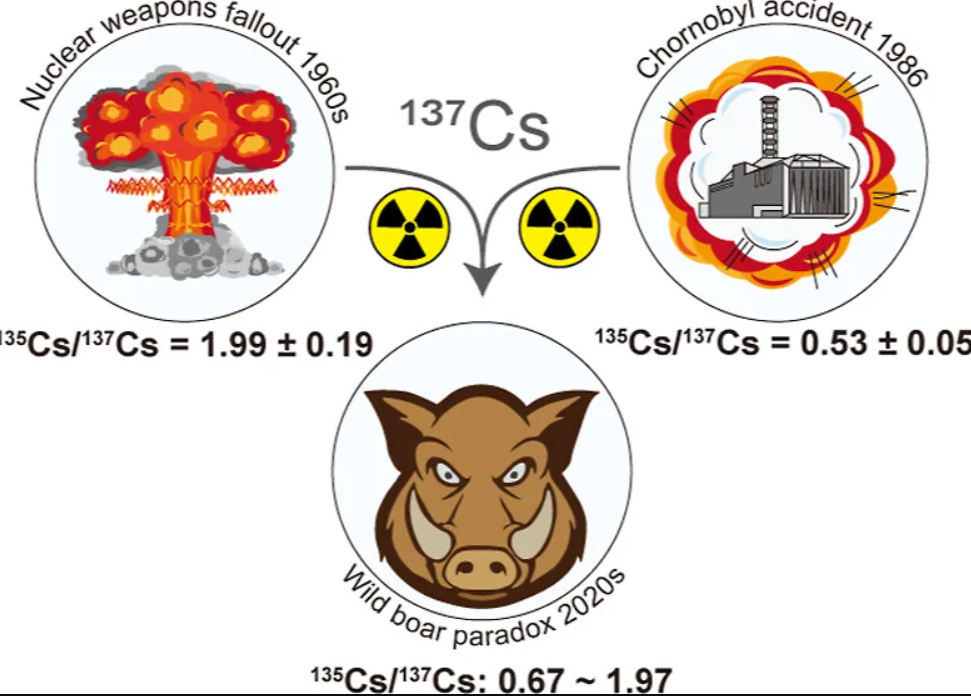How the mystery of radioactive pigs was solved: The fact that wild boars (Sus scrofa) in the Bavarian forests have been contaminated with radiation has been known for decades. Typically, this has been attributed to the Chernobyl accident, after which radioactive fallout spread through the region and contaminated the forest animals. However, in the years following the 1986 catastrophe, radiation levels in most animals decreased, while they remained stable in Bavarian boars. This is likely because pigs actively consume truffle mushrooms hidden beneath contaminated soil, which in winter may be one of their primary food sources.
But scientists from the University of Hanover and the Vienna University of Technology suspected that Chernobyl's radioactive fallout was not the only or the first source of radiation in the forest, considering that during the Cold War, more than 2,000 nuclear bombs detonated worldwide, including 500 of them in the atmosphere, with a peak in detonations in the 1960s. To pinpoint the source of radiation, researchers collaborated with hunters, collected samples of meat from 48 Bavarian boars, and measured the levels of radioactive cesium-137 and cesium-135, which form in different proportions in nuclear reactors and bomb explosions.
What did the analysis reveal?
Firstly, the study confirmed that 88% of the samples were too contaminated with radiation to be safely consumed according to German standards. As for the origin of the radiation, all pig samples contained contributions from both the Chernobyl accident and nuclear weapons testing. The proportion of radiation from nuclear bombs ranged from 10 to 99%, indicating that in some cases, the bombs themselves were enough to render the meat inedible.
Researchers conclude that atmospheric nuclear weapons testing conducted more than 60 years ago continues to be an environmental contamination factor. Moreover, the idea that their contribution, compared to the Chernobyl disaster, was insignificant turned out to be a significant underestimation.
The Chernobyl nuclear power plant accident harmed many animals, but some of them adapted to radiation better than others. In particular, Chernobyl frogs in heavily contaminated areas developed a darker skin color, which protected them from excessive radiation.
PigUA.info by materials nauka.ua



